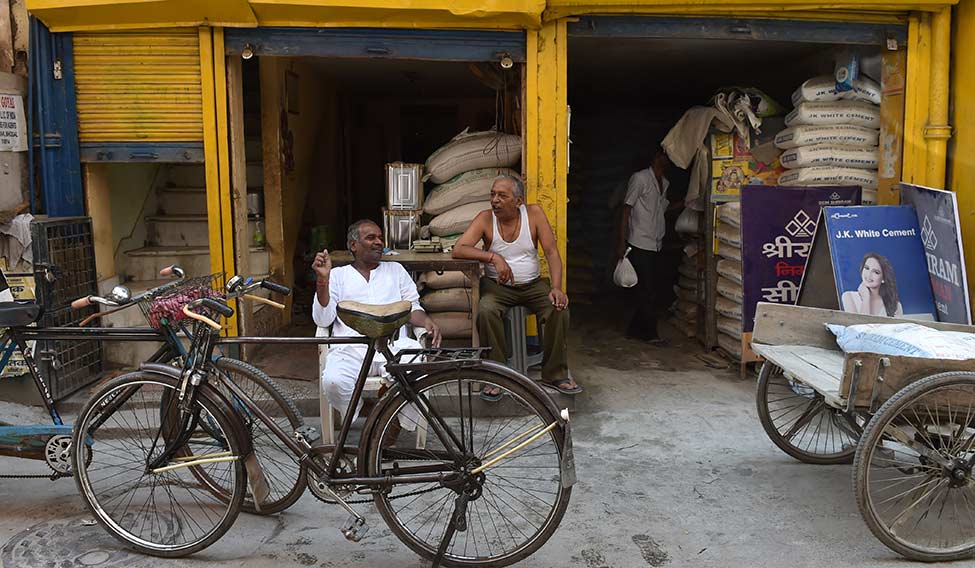Indian economy, the third largest economy in the world in terms of purchasing power parity after the US and China, has gone through major structural adjustments in monetary and fiscal areas in the last two years. Demonetisation in November 2016 and Goods and Services Tax (GST) in July 2017, have undoubtedly influenced the growth rate in the short term.
This is evident from the decline in GDP growth rate to 7.1 per cent in 2016-17 from 7.9 per cent in 2015-16, which evidently was the effect of demonetisation. In the monetary sector, a number of developments have taken place. Some of which are favourable, while others reflect sluggishness in the economy. At present, 99 per cent of currency in circulation prior to demonetisation, have returned to the economy, easing off the shock caused due to demonetisation. However, banking habits has improved and bank deposits have gone up but there is no incremental growth in currency demand. The currency in circulation on September 2017 at Rs 14,963 billion was 10 per cent lower than the previous year. The economy is economizing on use of cash and digital payments have gone up by 56 per cent. Bank deposits which went up by 11 per cent in September 2016 has been slowed down to 8.7 per cent this year. Credit growth has been lackluster. While credit growth in September 2017 was 10.1 per cent, this year it has dropped to 6.9 per cent. Forex reserves have gone up by $35 billion to $375 billion in October 2017.
The first quarter of the current year has shown a decline in growth rate to 5.7 per cent. This is due to the effect of GST, but will wither away in the next quarter. The GST has been the most fundamental change on the fiscal front in indirect taxation. Getting rid of the multiple taxes at multiple locations, with several adverse effects, with cascading effect of taxes on prices being the major, has improved the fiscal and economic efficiency of the system. We expect the transition is revenue neutral so that government revenue is not affected, and prices come down due to elimination of the cascading effects of earlier multiple taxes. We are yet to get the data on both the effects, but sooner we will witness the favourable effects. The problems with the implementation of GST would surface and would take some time to get resolved completely.
On the agricultural front the progress has been impressive. Despite the setback from drought and floods in some areas in 2016-17, the foodgrains output reached a record level of 276 million tonnes surpassing earlier record of 265 million tonnes in 2013-14. The production of pulses went up by 37 per cent reducing imports. Oilseed output went up by 29 per cent and cotton by 9 per cent, but sugar output went down by 12 per cent. Agricultural growth is buoyant this year and foodgrains output is estimated to go up further from last year’s record level.
The major concern is about the overall deceleration in growth rates in the industrial sector. During April-August 2017 the industrial growth has fallen to 2.2 per cent from 5.9 per cent during the same period in 2016. The manufacturing growth declined to 3.1 per cent from 5.5 per cent. In contrast, mining and electricity showed robust growth of 9.4 per cent and 8.3 per cent respectively.
The year 2016-17 has been favorable on the balance of payments front. Exports grew by 4.7 per cent in the current fiscal, imports remained stable and trade deficit was reduced by 14.5 per cent to $46 billion. During the first half of the current year trade deficit has gone up due to rise in imports.
In the last monetary policy review meeting, the RBI kept the policy rate unchanged at 6 per cent. The rate was cut by 0.25 per cent in August when the market expectation was a 0.5 per cent cut. With inflation rate falling to a low of 1.5 per cent in June and 2 per cent in July, RBI has lowered the inflation forecast to 2.5-3.5 per cent from 4.5 per cent earlier. However, the concern of RBI is on the fiscal front. Although the fiscal deficit target has been reduced to 3.2 per cent of GDP from 3.5 per cent in the last year, 96 per cent of deficit has been covered in the first five months of the current fiscal year. Unless the tax revenue receipts grow fast enough to recover the backlog in the coming months, the fiscal situation will be worrisome. This factor worries RBI, and despite low inflation and low growth, RBI may wait for some time to get a clearer picture of revenue effect of GST. If the revenue effect is positive and inflation remains under control, the RBI may lower the rate in December or next year.
A combined effect of all events in both monetary and fiscal front has indeed faltered the economic growth. With the recent announcement on recapitalisation of public sector banks and fiscal measures including massive public expenditure in infrastructure, the economic growth is expected to kick in. The central government has also announced improvement in the GST network, so as to ease the problems faced by traders. Even though the growth story of Indian economy has lost its sheen, the signs of revival are positive.





